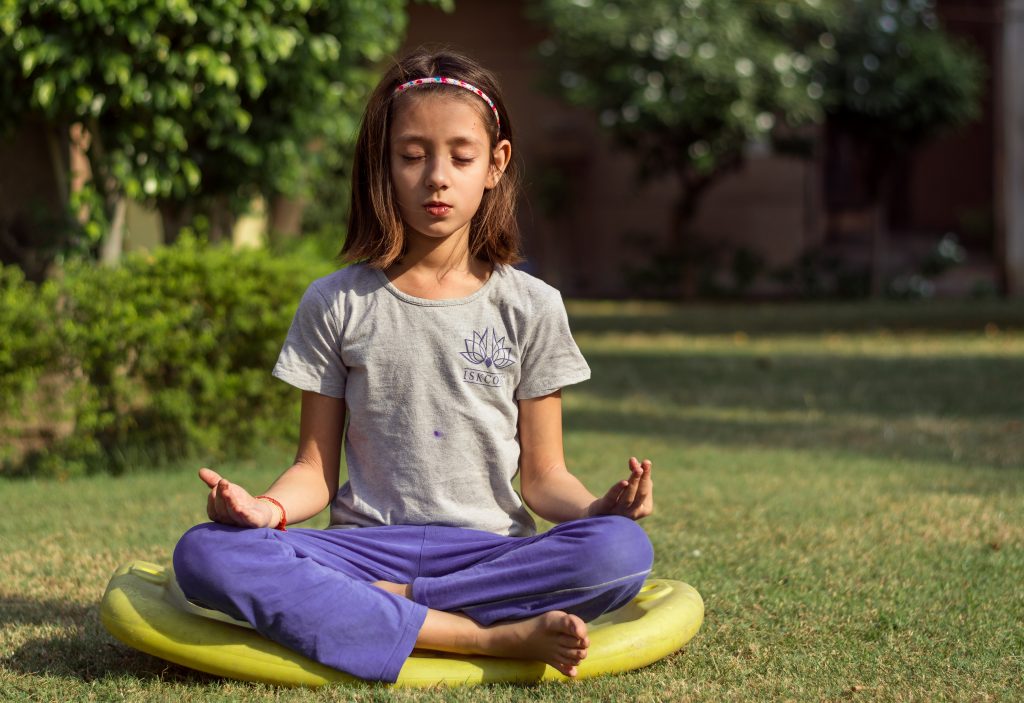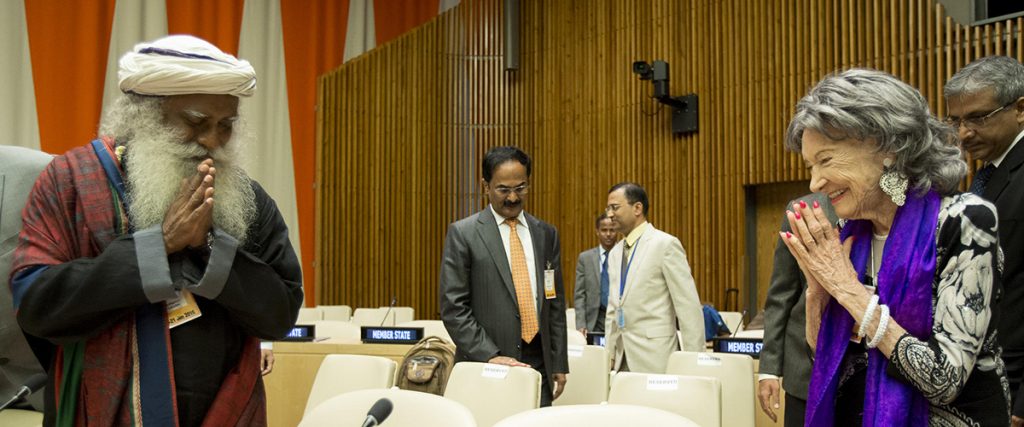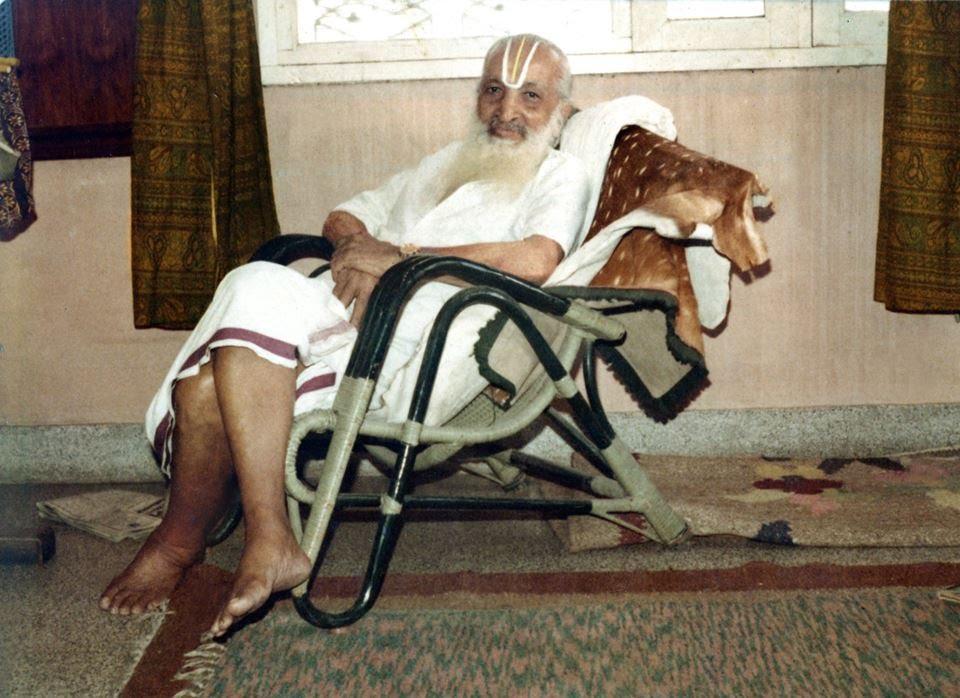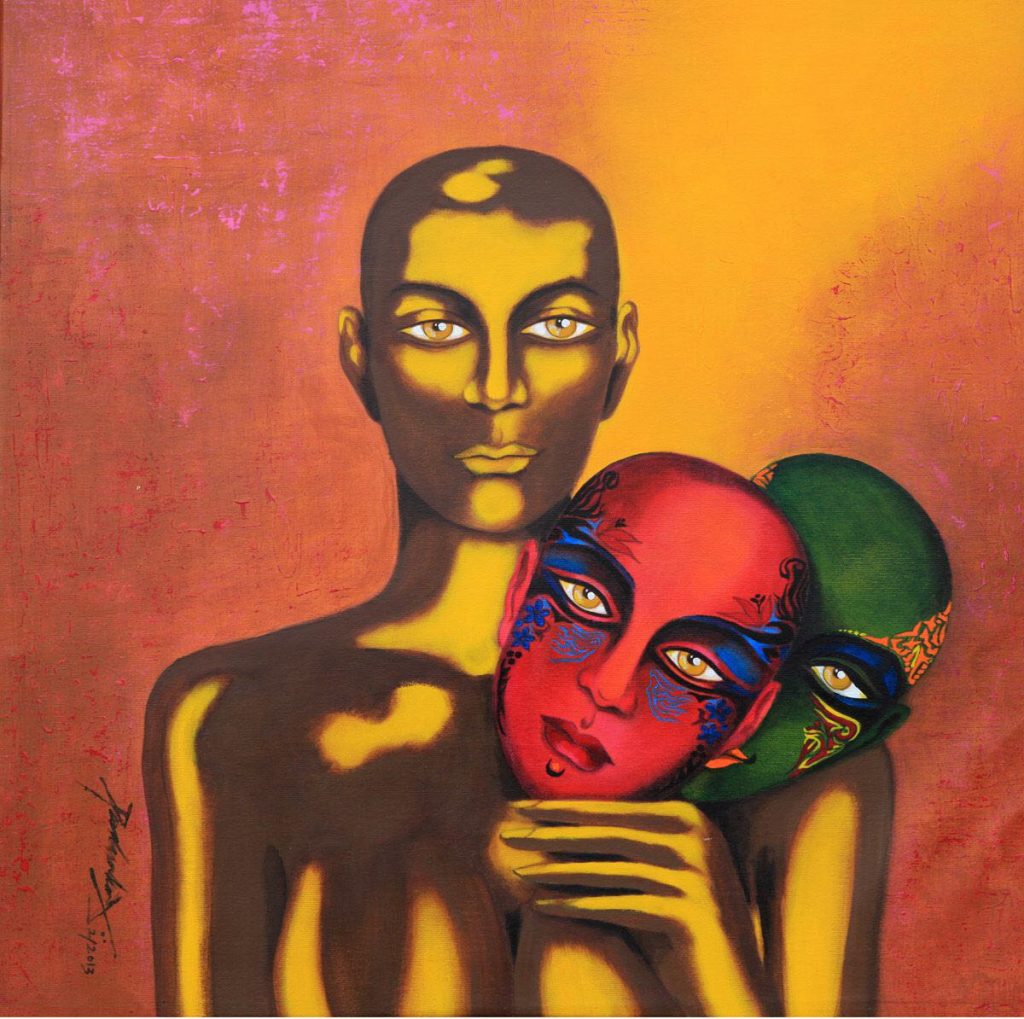
Yoga is one of India’s greatest gifts to humanity. This ancient yogic science continues to spread across the globe to alleviate the masses from afflictions at the physical and mental level. On 11 Dec 2014, 177 nations at the UN co-sponsored the Bill to institute the International Day of Yoga (IYD) on 21 June every year. This was a historic moment in the UN, and also a reflection of the growing popularity of yoga around the world.
Moment of Truth
In 2016, the UN took this one step further and proposed yoga as a means of achieving the UN Sustainable Development Goals (SDGs). Specifically, yoga was proposed as a tool to achieve inner peace and harmony in alignment with the UN SDG 16, which
addresses the need for promoting peace, justice and strong institutions around the world.
The theme of the 5th IYD on 21 June 2019 is ‘Climate Action’. The themes of the IYD are also an acknowledgement of this moment of truth in our collective evolution, where sustainable living in peace and harmony with the people and nature around us has become a matter of utmost importance.

Some of the consequences of the ideas of growth and development that we have adopted in the recent past have been a steady rise in stress in professional and personal lives and a sense of alienation from the larger community that one is part of, not to mention a sharp rise in “lifestyle diseases”. It is against this backdrop that yoga started becoming more popular among the Western world and then made a comeback to the Indian urban elite and middle classes in recent times.

The growing popularity of yoga in the modern context also brought with it many distortions and dilutions to the practice of yoga. Teachers and studios became brands that were trying to market their style of yoga. New coinages started sprouting up every other day and one may read about acro yoga, beer yoga and even goat yoga, most of which has nothing to do with yoga in the real sense.
Even within the established traditions like Ashtanga Yoga Tradition (Mysore School of Yoga) and many Hatha Yoga Practitioners, it is often found that some of the fundamental principles of yoga such as ahimsa (non-violence) towards the self or focus on breath is compromised in an attempt to push the body into difficult postures without honouring its present limitations. The rise of ‘Instagram Yogis’ has also in a way reduced yoga into a visual experience/art similar to gymnastics or dance.
The very practice that was meant to establish the practitioner in a space of ‘Santam’ within started becoming more about ‘fun’ and ‘excitement’ and even indulgence in the senses in some cases. How does one hope to achieve peace and harmony through such a practice?
Yoga for Peace
A rediscovery of yoga by a return to its fundamental tenets is the need of the hour. A return to the yama-niyamas and to a practice that helps the practitioner delve deeper into themselves in a self-reflective manner is needed. Understanding yoga as taught by its true ambassadors like Sri T Krishnamacharya, who is known as the father of modern yoga, is one way of moving in that direction.

At Ritambhara, we conceptualised an international event on the theme ‘Yoga for Peace’ with the intention to present yoga in a holistic manner. As part of the event, we chose to explore the concepts of Maitri (Friendliness) and Karuna (Compassion)
mentioned in Patanjali’s Yoga Sutras through a combination of asana-pranayama practice (Bahiranga Yoga) and through a contemplative engagement with stories from Indian mythology (Antaranga Yoga or Inner Work Through Yoga).
We coordinated with 19 trainers from 14 countries across the world to be part of this international event. Raghu Ananthanarayanan, co-founder and trustee of Ritambhara Ashram, offered online mentoring to the trainers on how to look at the Indian mythology as a mirror to rediscover answers to some of the fundamental questions that we hold in life, such as, “Who am I?”, “Where am I?” and “Why am I here?”

As we met every week to engage with a new story from Mahabharata, the virtual space transformed into a Sangha enabling each person to get in touch with their inner evocations as they read the story. We were able to share from a space of vulnerability and trust. As we listened to each others’ evocations from the story, I was left in wonderment (a true sense of ‘adbhutam) at the universality and relevance of this ancient saga of human condition in the modern context. Most of the participants had no background of Indian mythology and yet a small excerpt from it had the power to evoke a response that could connect all of us together. We discovered a true sense of Maitri and Karuna to ourselves and to each other cutting across borders and cultures in these engagements.
As we engaged with the reflections about our personal life in all its varied hues, stories of valour, pain, disappointment and contentment, we also arrived at the realisation of the commonness and unity of our emotions and experiences in a totally different geography, culture and time. As the Antaranga Yoga Sadhana proceeded, we could find connections between our life experiences and the wisdom encapsulated in the Yoga Sutras. Yoga Sutras were coming alive in our contemplative engagement and holding a mirror to ourselves to reflect. It was beautiful and serene.
On this International Day of Yoga, all the 19 trainers from around the world will now facilitate this event ‘Yoga for Peace’ in over 20 cities across 14 countries. We hope to create oases of contemplative engagement and inspire aspiring yogis around the
world to return to the fundamentals of yoga on this day. Through individual peace and harmony alone can world peace and harmony be achieved. May we all take one step in that direction on this day and every day, one breath at a time.


 Anoop is a student of Yoga, an entrepreneur, a coach and a father of two young boys. He has led successful leadership stints in both the corporate and non-for-profit sectors. On encountering the country’s water/farmer crises at close quarters, he decided to pause and examine the impact various ‘isms’ – capitalism, colonialism, etc., were having on us as individuals, families, the society and the environment at large. This quest led him to formally engage with traditional Indic knowledge systems while also learning from the latest advances in science – about our physical and mental wellbeing, importance of body and mind work in healing trauma and the urgent need for a conscious rebuilding of family / work / social structures if we have to thrive individually and collectively. Insights, frameworks and processes gleaned from these on-going studies, an anchorage in his own personal practice and his wide-ranging experiences is what Anoop brings to facilitation/coaching spaces in Ritambhara and his various professional engagements.
Anoop is a student of Yoga, an entrepreneur, a coach and a father of two young boys. He has led successful leadership stints in both the corporate and non-for-profit sectors. On encountering the country’s water/farmer crises at close quarters, he decided to pause and examine the impact various ‘isms’ – capitalism, colonialism, etc., were having on us as individuals, families, the society and the environment at large. This quest led him to formally engage with traditional Indic knowledge systems while also learning from the latest advances in science – about our physical and mental wellbeing, importance of body and mind work in healing trauma and the urgent need for a conscious rebuilding of family / work / social structures if we have to thrive individually and collectively. Insights, frameworks and processes gleaned from these on-going studies, an anchorage in his own personal practice and his wide-ranging experiences is what Anoop brings to facilitation/coaching spaces in Ritambhara and his various professional engagements.
 Priya is a Yoga therapist in the Krishnamacharya tradition. She adapts Reiki & energy work, Vedic chanting, life coaching & Ayurvedic practices in her healing spaces. She is committed to nurturing collectives that have the praxis of Yoga at their heart.
Priya is a Yoga therapist in the Krishnamacharya tradition. She adapts Reiki & energy work, Vedic chanting, life coaching & Ayurvedic practices in her healing spaces. She is committed to nurturing collectives that have the praxis of Yoga at their heart. Anisha has been on an exploration to understand herself through yoga for the last 15years which led her to teaching yoga, yoga therapy and inner work through yoga.
Anisha has been on an exploration to understand herself through yoga for the last 15years which led her to teaching yoga, yoga therapy and inner work through yoga. Apoorva chanced upon Yoga in her early 20s. A spark was lit within and there was no turning back. Her exploration led her to the Krishnamacharya tradition more than a decade ago. Curious about human behaviour and what drives it, she was thrilled when her search ended (and also began) when she first came upon the Yoga Sutra, which illuminated a path towards answering many questions that had been held for a long time.
Apoorva chanced upon Yoga in her early 20s. A spark was lit within and there was no turning back. Her exploration led her to the Krishnamacharya tradition more than a decade ago. Curious about human behaviour and what drives it, she was thrilled when her search ended (and also began) when she first came upon the Yoga Sutra, which illuminated a path towards answering many questions that had been held for a long time. Anita is a yoga teacher and therapist in the tradition of Sri.T.Krishnamacarya and Sri T.K.V. Desikachar, a Reiki practitioner and a Life Coach. She is also the founder of Vishoka, a center for learning Indic and energy-based frameworks for living and healing. Her deep concern for human suffering and the problems of unsustainable living kept her on the path of seeking an integrated approach to looking at life, living, learning and healing.
Anita is a yoga teacher and therapist in the tradition of Sri.T.Krishnamacarya and Sri T.K.V. Desikachar, a Reiki practitioner and a Life Coach. She is also the founder of Vishoka, a center for learning Indic and energy-based frameworks for living and healing. Her deep concern for human suffering and the problems of unsustainable living kept her on the path of seeking an integrated approach to looking at life, living, learning and healing. Ankit is a seeker in the wisdom traditions of India. The core of his work includes creating dialogic spaces where people can look within and see the connection between their inner and outer lives. Inspired by the likes of Gandhi, Aurobindo, Vivekananda and Guru Gobind his experiments in service took him back to his roots in Punjab where he is creating a community-led model of higher education which is open, inclusive and accessible for all. Ritambhara for him is a space for engaging in a community which is committed to a DHramic life. He anchors his work of learning and leadership in the Antaranga Yoga Sadhana and the humanistic wisdom of Mahabharata.
Ankit is a seeker in the wisdom traditions of India. The core of his work includes creating dialogic spaces where people can look within and see the connection between their inner and outer lives. Inspired by the likes of Gandhi, Aurobindo, Vivekananda and Guru Gobind his experiments in service took him back to his roots in Punjab where he is creating a community-led model of higher education which is open, inclusive and accessible for all. Ritambhara for him is a space for engaging in a community which is committed to a DHramic life. He anchors his work of learning and leadership in the Antaranga Yoga Sadhana and the humanistic wisdom of Mahabharata.